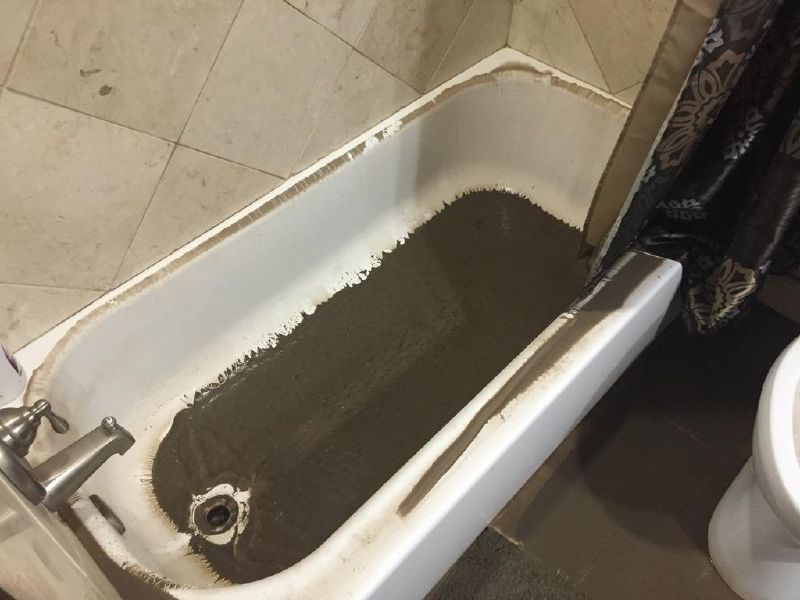Exploring Why Sewage Comes Up Through the Bathtub
Exploring Why Sewage Comes Up Through the Bathtub
Blog Article
They are making a number of great points on the subject of Why sewage is coming up through your bathtub overall in this content underneath.

Sewage back-up in the bathtub can be an upsetting and unsanitary issue for any property owner. Not just is it troublesome, however it also postures major health and wellness threats and indicates underlying problems with the plumbing system. Comprehending why sewage is coming up through the tub is critical for taking appropriate activity to address the problem properly.
Introduction to the Issue
Typical Factors for Sewer Back-up
Clogs in the Sewage System Line
One of one of the most typical sources of sewage back-up is a clog in the drain line. This can happen as a result of the accumulation of debris, grease, or foreign objects in the pipelines, preventing appropriate circulation and triggering sewer to back up right into your tub.
Tree Root Intrusion
Tree roots seeking wetness and nutrients can infiltrate sewage system lines with tiny splits or joints. With time, these origins can grow and increase, triggering substantial damage to the pipelines and bring about sewage back-up issues.
Recognizing the Problem
When sewer starts backing up into the bathtub, it's a clear indication of an issue with the water drainage system. The wastewater that must be moving away from your home is rather discovering its back into your living space, which can bring about significant damage and carcinogen.
Prospective Reasons
Several aspects can contribute to sewage back-up in the tub. From clogs in the drain line to concerns with the plumbing facilities, determining the source is necessary for discovering an option.
Aging Facilities
Older homes might have dated plumbing systems that are more susceptible to deterioration, cracks, and damage. As pipelines age, they become much more susceptible to leaks and obstructions, raising the chance of sewage backup incidents.
Heavy Rainfall or Flooding
Throughout periods of heavy rainfall or flooding, the drain system might end up being overloaded with excess water, triggering backups and overflows. This can lead to sewer supporting into tubs and various other components inside the home.
Indicators of Sewer Back-up
Foul Odors
Undesirable smells rising from drains pipes or components, specifically in the bathroom, may show sewage back-up problems. These smells are typically solid and relentless, signaling an issue that needs prompt focus.
Slow Draining Fixtures
Bath tubs, sinks, and commodes that drain slowly or not at all could be experiencing sewage backup. If multiple components are influenced simultaneously, it's likely that the issue originates from a common point, such as the primary drain line.
Gurgling Sounds
Weird gurgling or bubbling noises originating from drains pipes when water is running somewhere else in your home are a sign of air entraped in the plumbing system. This air build-up can result from sewer backup and ought to be explored immediately.
Wellness Risks Connected With Sewer Backup
Contamination of Water System
Sewage back-up can contaminate the water supply in your house, positioning a major wellness threat to you and your family. Direct exposure to contaminated water can lead to stomach concerns, skin infections, and various other ailments.
Mold and mildew Growth
Wetness from sewage backup can create optimal problems for mold development in your home. Mold and mildew spores can worsen breathing issues and trigger allergic reactions in sensitive people, making punctual clean-up vital.
Spread of Illness
Sewage includes damaging germs, viruses, and parasites that can trigger a variety of conditions, consisting of hepatitis, cholera, and gastroenteritis. Entering into contact with sewer or infected surfaces places you in danger of infection.
Cleaning Up After Sewage Back-up
Sanitation Procedures
Extensively decontaminate and disinfect influenced areas after sewer backup to remove hazardous germs and protect against mold development. Use proper cleaning products and safety equipment to make sure risk-free and efficient cleanup.
Remediation of Affected Locations
Repair any type of damages to flooring, walls, or components caused by sewer back-up. Depending on the extent of the damage, you may require to replace carpeting, drywall, or other materials to restore your home to its pre-loss condition.
Immediate Actions to Take
Shutting Off Supply Of Water
In the event of sewage backup, it's necessary to turn off the water system to stop more contamination and damage. Situate the main water shutoff valve in your home and shut it off till the concern can be fixed.
Contacting a Professional Plumber
Handling sewage back-up is not a DIY work. Get in touch with a qualified plumber with experience in managing sewage-related issues to assess the scenario and execute needed repair services or cleanups.
Avoiding Contact with Infected Water
Till the sewage back-up is dealt with, stay clear of contact with infected water to prevent the spread of microorganisms and virus. Put on safety equipment if you should be in the afflicted area and clean your hands extensively later.
Preventive Measures
Normal Maintenance of Sewer Lines
Set up routine evaluations and upkeep of your drain lines to identify and address prospective concerns prior to they escalate right into significant problems. This can include cleaning debris, inspecting for tree root breach, and repairing any kind of broken pipes.
Mounting Backwater Valves
Take into consideration installing backwater shutoffs in your plumbing system to stop sewage from flowing back right into your home during periods of heavy rainfall or flooding. These valves immediately close when water draws back up, safeguarding your home from contamination.
Correct Disposal of Household Waste
Avoid purging anything other than bathroom tissue and human waste down the commode to avoid obstructions and blockages in the sewer line. Dispose of oil, oil, and various other house chemicals appropriately to decrease the danger of plumbing problems.
What To Do If Sewage Starts Coming Up Through Your Bathtub
Sewage coming up through your bathtub is more than just gross. It poses a major health risk as sewage contains harmful bacteria and microorganisms that can be dangerous if exposed to them. While your tub or shower will certainly need a deep cleaning when this occurs, you’ll first need to get to the root of the issue.
If you notice sewage coming up through your bathtub, research Cherry Hill, NJ, licensed plumbers right away to get it fixed.
Why Sewage Is Coming Up Through Your Bathtub
The most common reason for sewage coming up through your bathtub is a clogged sewer line. All the sinks, toilets, and tubs connect to a single drain pipe that leads to the sewer line under your house. This drain line carries all wastewater and sewage away from your home to the city’s sewer system.
When the sewer line becomes clogged or blocked, wastewater has nowhere to go but back toward your house. This results in sewage coming up through your drains, often starting with your tub or shower.
The sewer line can become blocked by anything, but the most common culprits include:
Hair ? Cooking oils and grease ? Food waste ? Soap particles ? Children’s toys ? Jewelry ? Baby wipes or other non-flushable items ? Dirt ? Rocks ? Tree branches and debris ? Rodents How To Fix A Clogged Sewer Line
When you experience sewage coming up through your bathtub, it’s always best to contact a professional. Attempts to fix a clogged sewer line without experience often lead to more plumbing damage. However, you can try a few things that may loosen blockages in smaller connecting pipes.
Don’t Use A Plunger
Plungers only work to loosen obstructions near the head of the drain or toilet. It won’t be able to reach your sewer line or unclog the blockage.
Turn Off The Water
Turning the water off from the main valve will prevent excess water from flowing into already backed-up areas. This will also keep more sewage from coming up through your drains.
Check Your Vent Pipe
When vent pipes become clogged or blocked, it can lead to problems with the sewer line. By pulling any obstructions out of the pipe, your sewer line should be able to properly drain. The vent pipe can be located on your roof, usually directly over your bathroom.
Snake The Shower Drain And Toilet
Using a drain snake can help break up the object causing a blockage. By snaking both the shower drain and the toilet, you may be able to fix the issue. You’ll know you’re successful if the tub drains all sewage and wastewater.
Call A Professional
If these tactics don’t work, you will need to call a professional plumber. They will perform a camera sewer line inspection to find the source of the blockage and determine the best way to remove it. A professional will use a drain snake or conduct hydro jetting to unblock the sewer line and get things back in working condition.
If the obstacle blocking your drain line has caused any damage, you may also need your pipes repaired or even replaced.
Gurgling While Draining
Listen for gurgling sounds coming from the shower drain or sink, as this is an early warning sign of a clogged sewer line.
Frequent Clogs
If your toilet or other drains continuously become clogged, you need to call a professional to look at it. While you may be able to get the water or waste to drain again, it may only be a temporary fix.

I have been very excited about Why is There Sewage Coming Up Through the Bathtub and I hope you enjoyed reading the new post. Remember to take the time to distribute this blog entry if you enjoyed it. Thanks so much for taking the time to read it.
This Resource
Report this page